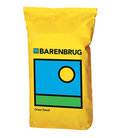What are the benefits of growing red clover?
- high yielding
- can produce yields of 12-16t DM/Ha, when grown with a grass companion crop
- can fix up to 250kg per Ha per annum of atmospheric N in the soil
- produces 16-20% protein
- resulting in higher dry matter intakes and improved animal performance
- Improves soil health, structure and fertility
- A short to medium term perennial that generally lasts 4-5 years and is well suited to mixtures with Hybrid ryegrasses
It is no surprise that farmers are looking to clovers as an alternative source of nitrogen. With the interest in using red clover on the increase, it is really important to understand how to manage red clovers to get the best performance from them.
Managing red clover
- Red clover prefers free draining fertile soils. As with any other crop, take soil samples from the fields earmarked for red clover. The optimum soil pH for clovers and legumes is 6.5, apply lime if the pH is below this. P & K indices need to be 2. Correct any imbalances before sowing.
- We recommend growing red clover no more than 1 in 5 years in a rotation as it can susceptible to various pests and diseases.
- Sow from May – August when soil temperatures are above 10 degrees centigrade.
- Pay attention to the quality of the seedbed, red clover likes a fine tilth (not powdery). Avoid cloddy seedbeds as they can cause clover seeds to be too deep and encourage slugs, particularly on heavy land.
- Sowing depth is crucial. The optimum sowing depth for Red clover is 5-10mm. Sowing any deeper will result in reduced establishment. Even distribution of seed will give good ground cover and help hold weeds back. It also gives more space for seedlings and helps the slower establishing clover to get going. If using a standard or direct drill with wider row spacings, consider diamond or cross drilling to give more space for seedlings and reduce the gaps between rows. Clover suffers when drilled tightly together in the same row as ryegrasses.
- Consolidate the seedbed well after drilling. A loose / fluffy seedbed will give poor seed to soil contact, lower moisture retention and lower establishment.
- When growing red clover in a mixture with Hybrid Ryegrasses, higher silage yields can be achieved and fermentation in the clamp is generally better due to the higher dry matter and water-soluble carbohydrate levels present.
- Red clover is fairly drought tolerant as it as has a deep tap root.
- Unlike white clover, Red Clover grows from a crown at the base of the stem. Looking after the crown is crucial, anything that causes damage to the crown will result in lower yields and reduced persistency.
Our top tips for managing red clover
- Do not overgraze - leave a grazing residual of 6-8cm above ground.
- Do not to cut too short when making silage, leave a stubble height of 8-10cm, when going into winter aim for a 6cm residual.
- Do minimise heavy traffic when silage making during wet weather periods as this will cause physical damage to the crowns and can cause compaction which will restrict root and rhizobia activity underground.
- Try not to cut or graze more than once every 4-5 weeks as this will seriously reduce the persistency.
- Most of red clover nutrition is in its leaves so when cutting for silage turn the conditioner on the mower off and ideally leave in a wide swath to wilt naturally. Preferably within 48 hours of cutting, aiming to achieve a target dry matter of 35%. Using an aggressive rake can cause leaf shatter and high loss of quality.
- Don’t forget red clover produces phyto oestrogen which prevents breeding ewes taking to the tup. So keep them off red clover grazing and silage for 6 weeks before and 6 weeks after tupping. Fattening lambs are unaffected and they can be grazed on red clover swards or fed red clover silage at any time.
- Red clover can cause bloat of grazing stock. It is important to introduce stock slowly onto red clover swards and never turn out hungry animals that are likely to gorge themselves. Use hay or straw to provide supplementary roughage before and during grazing of red clover swards


